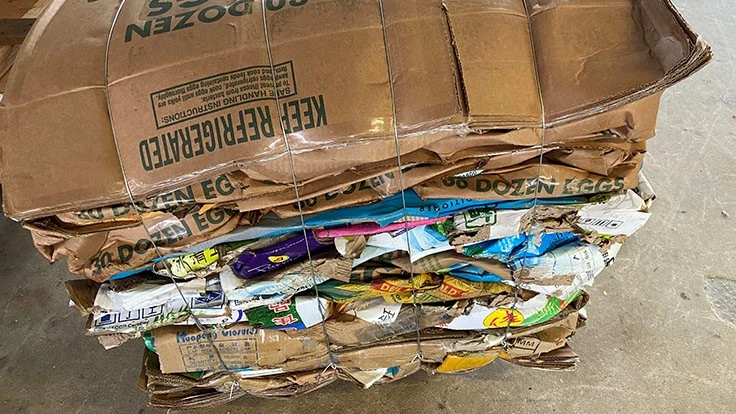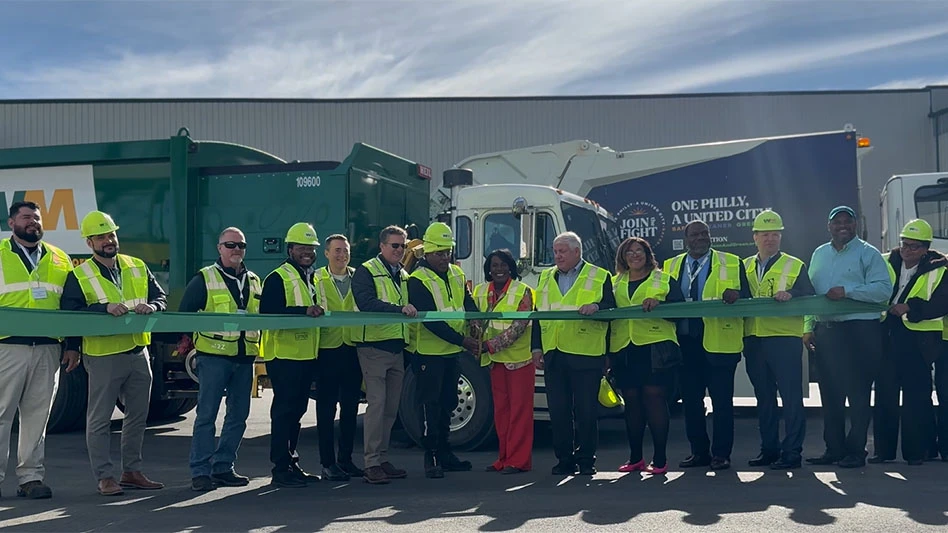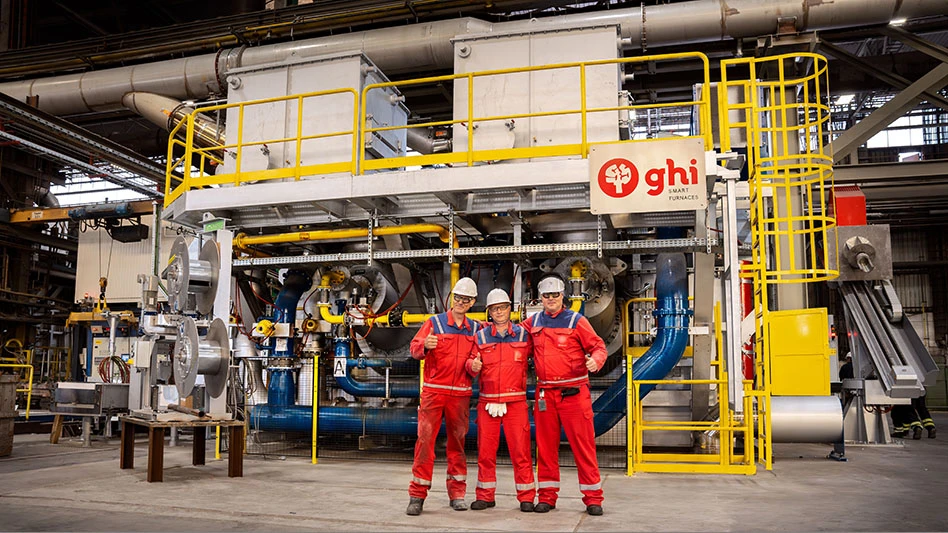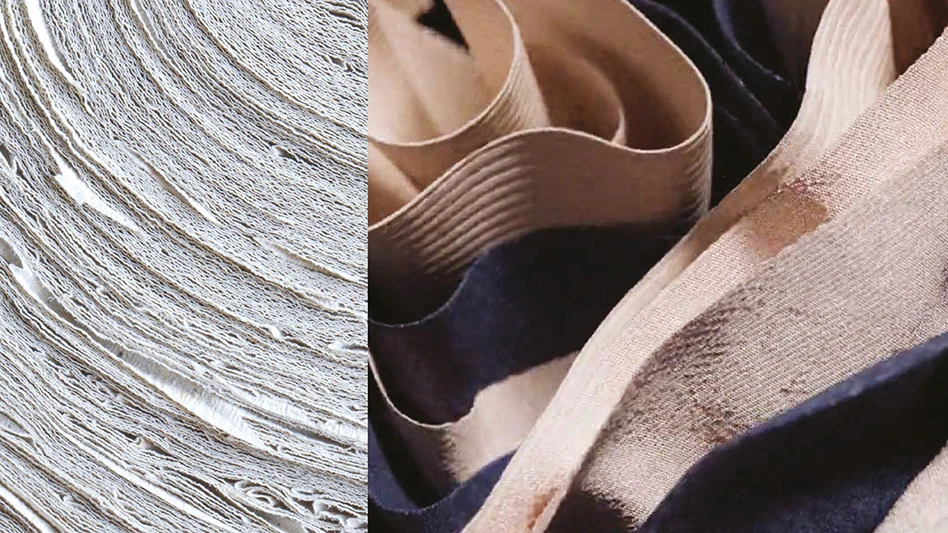
Recycling Today archives
Speakers across all paper sessions at the 2022 Paper & Plastics Recycling Conference (PPRC) in Chicago in October echoed similar sentiments about the fallout from the coronavirus pandemic on the recovered paper market, with one international expert suggesting that, while he expects prices to bounce back, the market is not yet at the low end of the price cycle.
The impact is seen most notably in old corrugated containers (OCC) pricing, which has seen a three-month crash of $88 per ton since July. In October 2021, the national average OCC price was $164 per ton compared with $38 per ton this October, and regions across the U.S. have seen a $35 to $45 per ton decrease from September, according to Fastmarkets RISI’s Pulp & Paper Week for Oct. 5.
“In North America, the markets were incredibly hot until a few months ago, and we are currently seeing somewhat of a correction,” said Vincent Leon, principal at New York-based Afry Management Consulting. “That is slowing the demand for recovered paper—OCC [and] mixed paper, more specifically.”
Leon said this year’s market correction is mostly because of two factors: less recovered paper consumption in the domestic market and the rapid growth the market experienced during the COVID-19 e-commerce boom. He said with packaging mills taking downtime, internal inventory levels rising and e-commerce slowing, “that creates a negative price environment on the domestic market.
“We’re talking about slowing economies, potential recessions, some struggles specific to trade, high logistics costs [and a] high USD [U.S. dollar]—this is unfortunately going to last for a while,” Leon said. “In the next six months we don’t expect any major improvement.”
During the Mill Buyers Panel at the PPRC, Johnny Newsome, director of global mill supply and trade sales at Sonoco, a Hartsville, South Carolina-based packaging producer, said the uncertainty of the pandemic over the past two years created the difficult market conditions of today.
“Within a few months of COVID, mills [were] classified ‘essential’ [and] running hard when other businesses shut down,” he said. “[Recovered fiber] supply started to dry up; prices shot up. We were concerned about supply security [and] supply availability. There was a lot of uncertainty.”
Newsome said Sonoco’s 20 recycling facilities stocked several thousand tons to ship to mills—Sonoco’s and others—across the United States as what he called a “safety stock” in case supply continued to be scarce during the COVID-19 shutdown.
“We had to ramp up in [2020], and then it bounced back out a bit, then it ramped back up again in 2021,” he said. “It was a volatile time, but we managed through it and now I think what we’re seeing is some backlash from artificial ramp-up from a pandemic, which just put us in a very tough market today.”
Fellow speakers on the Mill Buyers Panel—Bill Theado, director of group fiber procurement at Delaware, Ohio-based packaging producer Greif, and Stephane Dube, vice president of supply chain at Kingsey Falls, Quebec-based Cascades—reported similar struggles when it comes to supply.
“During the run-up over the last two years, it was easy to find fiber because it was about price—you just paid what you had to pay to get the supply,” Theado said. “Today … mills aren’t running as well and there’s a lot of supply out there, and our buyers are having a real tough time saying no. It’s hard to say no and it’s damaging the supply. … It’s worse today than it was during COVID.”
Dube added, “We’re not as busy as we were. Export is no [longer] there. Some of it, I think, is really due to COVID, as well, I think, we were floating on something that was unreal and now we’re back to reality—I think below the reality—in those market conditions. [There were] a lot of changes in the demand for us that created a huge impact at the end of the day.”
Leon said while the market will likely continue to experience a “low price environment” in the short term, a silver lining includes more than 2 million tons of capacity expected to come online in the U.S. over the next 12 months. Projects include Cascades’ Bear Island conversion project in Ashland, Virginia, as well as Greif’s $13 million expansion of its Greenville County paper mill in South Carolina.
“This is going to drive some demand, and those mills producing recycled-[content] containerboard, they are very cost-competitive,” Leon said. “The market is craving for lightweight packaging solutions, and the value proposition of those mills is actually much better than the traditional virgin-based mills when it comes to being able to produce lightweight packaging. So, there’s definitely a silver lining. … We’re not at the end of the low-price cycle, but long-term fundamentals are good, and we expect the prices to recover to a more-than-normal level.”
Latest from Recycling Today
- ReElement, Posco partner to develop rare earth, magnet supply chain
- Comau to take part in EU’s Reinforce project
- Sustainable packaging: How do we get there?
- ReMA accepts Lifetime Achievement nominations
- ExxonMobil will add to chemical recycling capacity
- ESAB unveils new cutting torch models
- Celsa UK assets sold to Czech investment fund
- EPA releases ‘National Strategy to Prevent Plastic Pollution’





